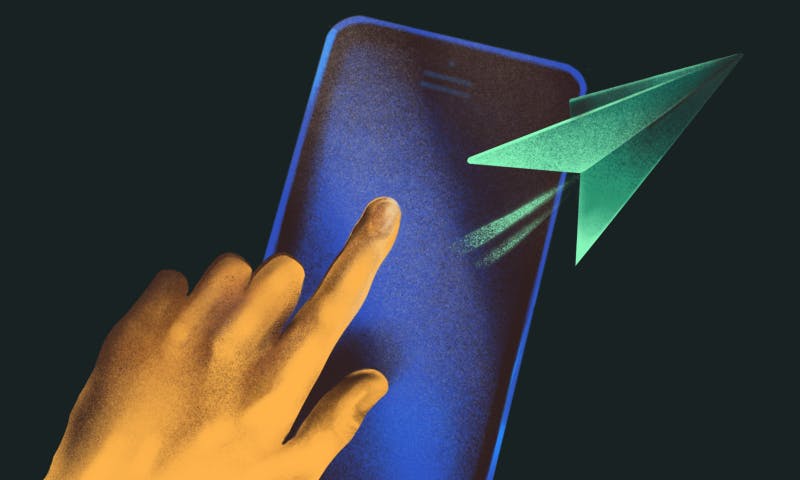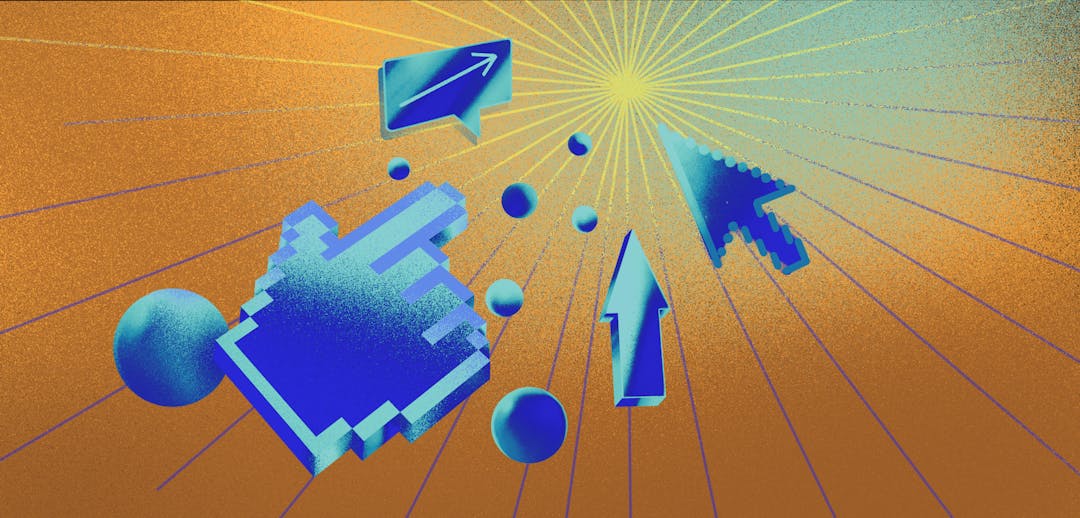Remember the story of Icarus?
Icarus was a figure in Greek mythology who made his own wings out of feathers and wax.
He was excited to go flying. So excited, in fact, he forgot his father’s advice not to fly too close to the sun. Of course, his overconfidence was his downfall. A literal downfall, in poor Icarus’s case, after his wings melted mid-flight.
Too many SaaS companies end up in the same situation. They launch a product, start bringing in some solid revenue, and put all their efforts into acquiring new customers. Their success blinds them to the hidden dangers every SaaS company faces—dangers like high customer churn.
Understanding the top reasons why customers churn—and knowing how to adapt your approach and keep them around—is vital for keeping your SaaS business sustainable and profitable. Fail to adapt, and you’ll quickly end up having your wings clipped.
Thankfully, you don’t need to end up like poor Icarus. To keep you safe from the horrors of customer churn, we’ve picked out eight top reasons for customer churn and laid out some actionable tips you can follow to crush your churn rate and skyrocket your revenue.
8 reasons why customers churn
- You’re attracting the wrong customers
- Your customers aren’t achieving their desired outcomes
- Your customer support needs work
- Your customers think your competitors can do a better job
- Your product has bugs customers believe you can’t fix
- Your customers no longer see the value in your product
- Your customers think your product’s too expensive (or too cheap)
Below, we explain each of these in more detail and how to tackle them.
#1: You’re attracting the wrong customers
It’s surprising how often customers sign up for a product without fully understanding whether that product meets their needs. As soon as they find out your product isn’t a great fit, it’s highly likely they’ll leave you behind for a competitor.
Closing the wrong deal is a very real problem for SaaS companies. As Lincoln Murphy writes on Sixteen Ventures:
Companies generally end up diverting resources from the customers with Success Potential who could actually benefit from their attention to those that, regardless of effort, will not be successful.
Fix: Ask the right questions upfront
Preventing churn caused by poor customer-product fit comes down to having an intimate understanding of your customers’ needs and making sure your messaging reflects the problem you’re solving instead of your product’s features.
Zendesk, for example, asks new trial users valuable questions about their customers right from the start:
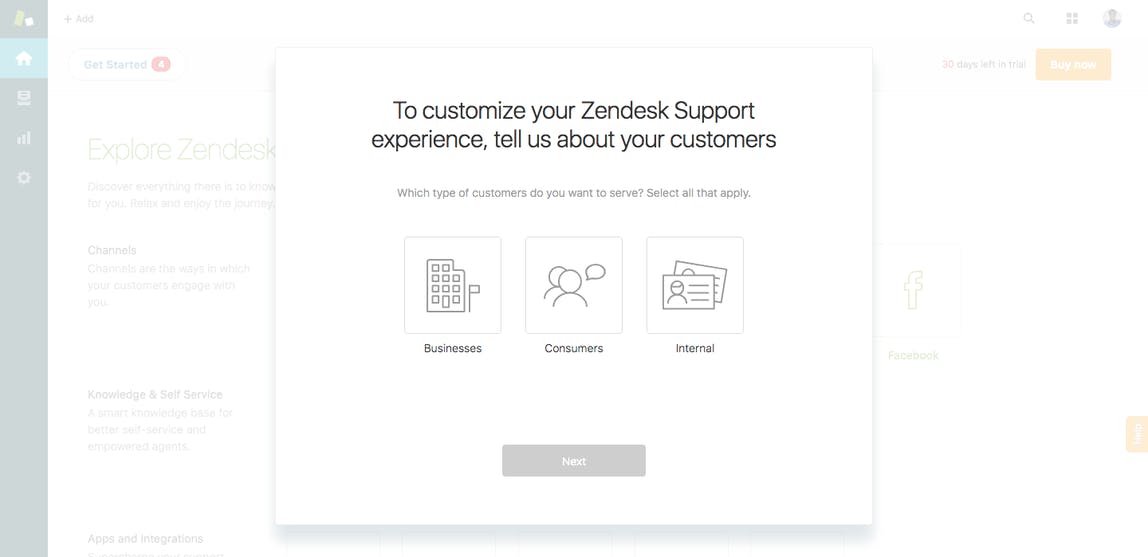
Zendesk asks the right questions to understand its customers. Image via Chargebee
It’s crucial to help prospects understand how your product might help them by asking the right questions at the beginning. That might be as simple as asking them, “What's the biggest problem you're trying to solve?” Once you have a clear idea of the problem they're solving, you’ll be able to write copy on your marketing site that targets the right customers and helps them understand whether your product is a good fit.
#2: Your customers aren’t achieving their desired outcomes
Your customers don’t sign up for your product just because it looks awesome, or it has more features than your competitors’. No, your customers are purchasing a specific outcome for their business—your product is just a tool to help them get there.
And if your product doesn’t help them quickly achieve their first success? Good luck keeping them around.

Customers are far more likely to churn before achieving their first success. Image via Groove
Customers quickly become frustrated and disengaged when key features don’t seem to work right. In fact, they never understood how to use the features in the first place. The best way to keep this from happening is by making sure you’re helping customers reach their goals. Your product is only part of that equation—your onboarding process, customer success teams, and self-service education also play a huge role.
Fix: Improve your onboarding procedures
A strong focus on customer activation instead of just customer acquisition can help curb churn, especially when you offer a freemium product. Make sure you learn what your “aha moment” is, and work on getting customers there as quickly as possible.
Preempt early frustration by having a well-tested and analyzed onboarding process that settles the customer into the account. Slack, for example, uses tooltips to direct users to key features like direct messages:
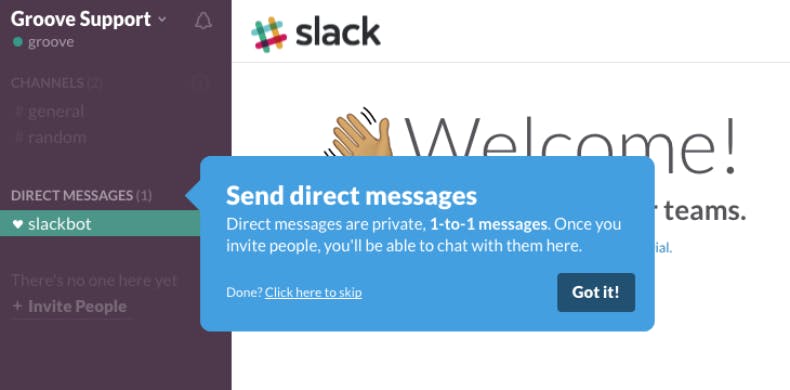
Slack uses tooltips to help onboard customers and reduce churn. Image via Groove
Make sure customers understand which key features will satisfy their needs and how to find and use these features. Tools like ProfitWell Metrics's engagement feature can help you learn where customers are getting stuck and direct them to the right resources.
#3: Your customer support needs work
Even the savviest customers run into problems from time to time—and small problems can quickly become big issues when they keep your customers from doing business.
When problems arise, customers don’t want to wade through a confusing knowledge base or converse with a bot on your website. They want to talk to real people who can help them solve the problem. Poor customer service can often lead to high churn—but there are multiple ways you can go about fixing it.
Fix: Make customer support a priority from the very beginning
Making great customer support a priority can differentiate your brand and helps you retain more customers.
If you can afford it, make live support a priority and treat it as a true profit center. If you’re still too small for a dedicated call customer service team, set clear expectations around when support will be available. A great way to manage customer expectations around support is by offering tiered support levels with different SLAs depending on how much customers are willing to pay.
Our friends over at Wistia navigated this minefield when it decided to remove its support phone number from its website, letting it scale its customer support without detracting from the customer experience:
"Today, when a potential customer comes in contact with Wistia, they interact with us through the website and documentation. We installed Olark (an awesome chat widget) in both locations, so that visitors can ask questions when we’re online, or leave us messages in our support inbox when we aren’t. Once a visitor signs up for a trial with us, they receive emails with both our phone and email contact information."

Wistia uses customer support as a differentiator to help combat churn. Image via Wistia
While in-person support is ideal, it’s also expensive. Customers often churn when they have a difficult time finding success with your product, so offering a comprehensive self-service knowledge base can disentangle stuck users, helping them reach their goals—and helping you keep more customers for the long haul.
#4: Your customers think your competitors can do a better job
Most customers only want what’s best for one person: them.
You may have the most well-engineered product in the world, but if your customers believe that your competitor’s product fits their needs better, they’ll leave you behind in an instant. And when they do, you’re not just losing revenue—you’re also losing market share, lowering employee morale, and giving your competitors a potential weapon.
Fix: Keep an eye on your competitors and focus on what sets you apart
Pricing is one of the easiest ways to outsmart the competition. First, make sure your pricing is competitive and based on the value you provide. Know where your competitors set their price points and how they package their deals, but don’t base your pricing on what they’re doing. Instead, use pricing analysis to determine price based on value. Paddle's Price Intelligently team can help with that.
Next, look at what makes you stand out. What’s your unique selling proposition—the thing your competitors simply can’t match? Do you provide the best service, like Wistia? Or can you build a better community through content, like Groove? What makes your company unique? Emphasize that in your marketing and positioning, and you’ll end up attracting more loyal and long-lasting customers.
#5: Your product has bugs customers believe you can’t fix
Customers rely on your product for their business, so when your product has bugs, glitches, or downtime, they lose productivity and revenue. Groove learned this the hard way recently and ended up having to rebuild its entire product to regain the trust of its customers.
Every software company has some level of technical debt, so I’m not saying you should eliminate every bug. The way you deal with issues when they inevitably come up, though, can mean the difference between customer retention and customer churn.
Fix: Regain trust with clear communication
Keep customers in the loop with regular updates, especially when problems arise. Buffer did a wonderful job of updating its customers when it was hacked back in October of 2013, quickly releasing a blog post and email letting customers know what was going on and keeping customers updated on the progress of the investigation and fix.
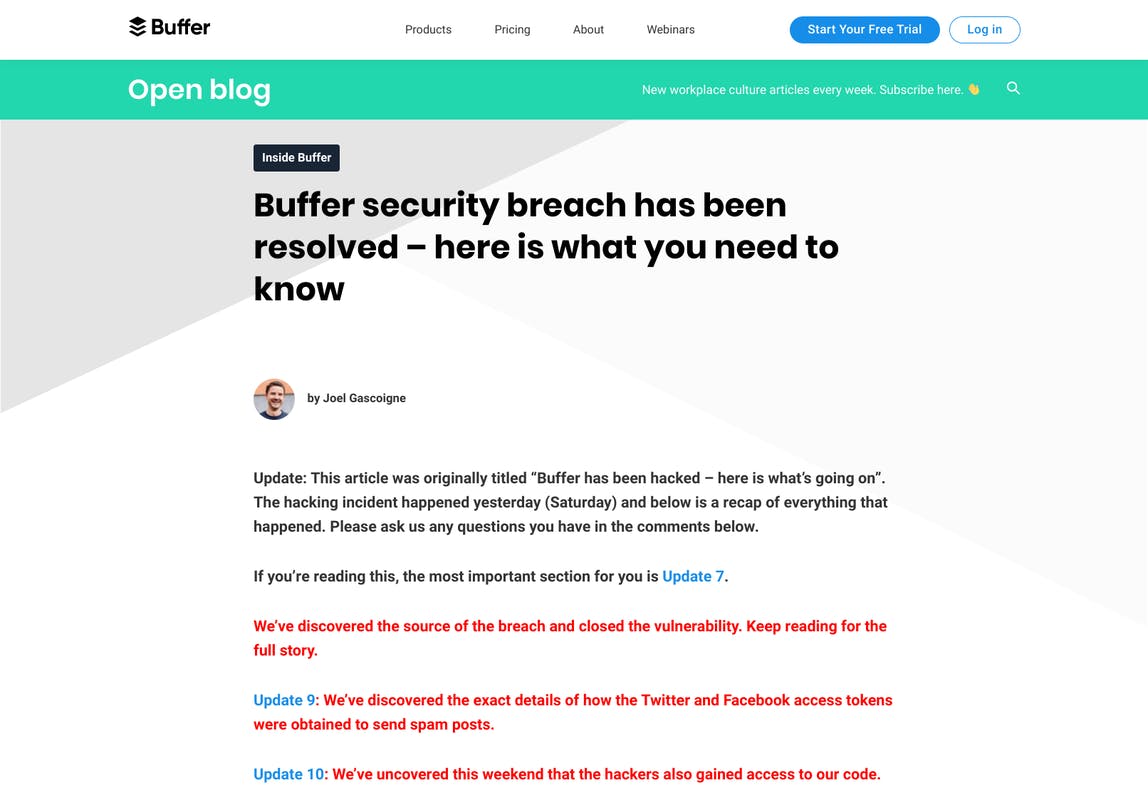
When Buffer was hacked, it kept customers in the loop, ensuring they were less likely to churn. Image via Buffer
Of course, a cure is always better than prevention and triage. When planning your product development roadmap, don’t just focus on new features. Work towards finding a balance internally where you spend a percentage of your development time on resolving technical debt.
Your customers—and your churn rate—will thank you for it.
#6: Your customers no longer see the value in your product
Keeping a tight budget is an essential part of running a successful business.
Companies spend willingly on products that they see as a high priority for their business, but there's a fine line between being seen as an essential investment (a “painkiller”) and being seen as non-essential baggage (a “vitamin”). And once you've crossed the line into vitamin town, there's a strong chance that sooner rather than later, your product will end up on the chopping block.
Fix: Position your company as a painkiller
Managing and predicting churn means ensuring every customer views your product as an essential part of their business—a painkiller.
It’s important to track your customer satisfaction over time. Surveying your customer base might take time and effort upfront, but you’ll gain a much closer understanding of what your customers truly value and where there’s room for improvement. Net Promoter Score (NPS) surveys are a great place to start.
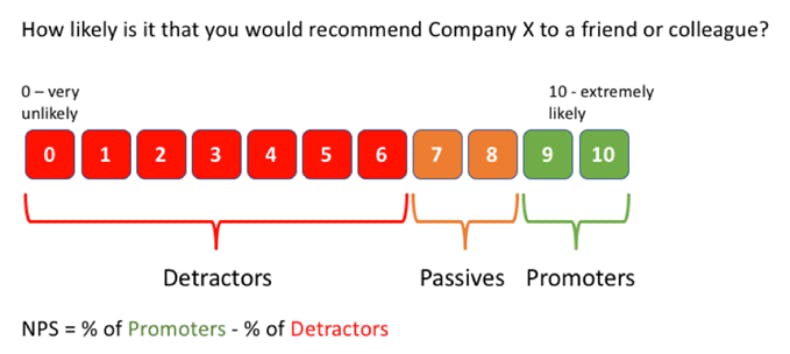
NPS surveys can help you track customer satisfaction and manage churn. Image via VoiceSage
The more invested customers are in using your product, the more likely they’ll see it as an essential part of their process. A great way to become more invested in a customer’s process is by offering longer contracts. Offering annual contracts can dramatically reduce your churn rate and cost you almost nothing to implement.
#7: Your customers think your product’s too expensive (or too cheap)
Effective pricing plays a huge role in customer retention.
If your customers perceive your product as too expensive, they’ll be more likely to switch to a lower-cost competitor. And at the other end of the spectrum, if customers perceive your product as too cheap for the value you’re offering, they might lose trust in your ability to solve their problem. Neither situation is great for your churn rate.
Fix: Optimize your pricing for value
The best way to combat churn from price-sensitive customers is to make sure you’re pricing properly in the first place. Customers need to see value in what you’re offering, so make sure you align your pricing with your value metric. In fact, SaaS companies that price based on value see measurably lower gross churn than those that price based on their competition or their costs.
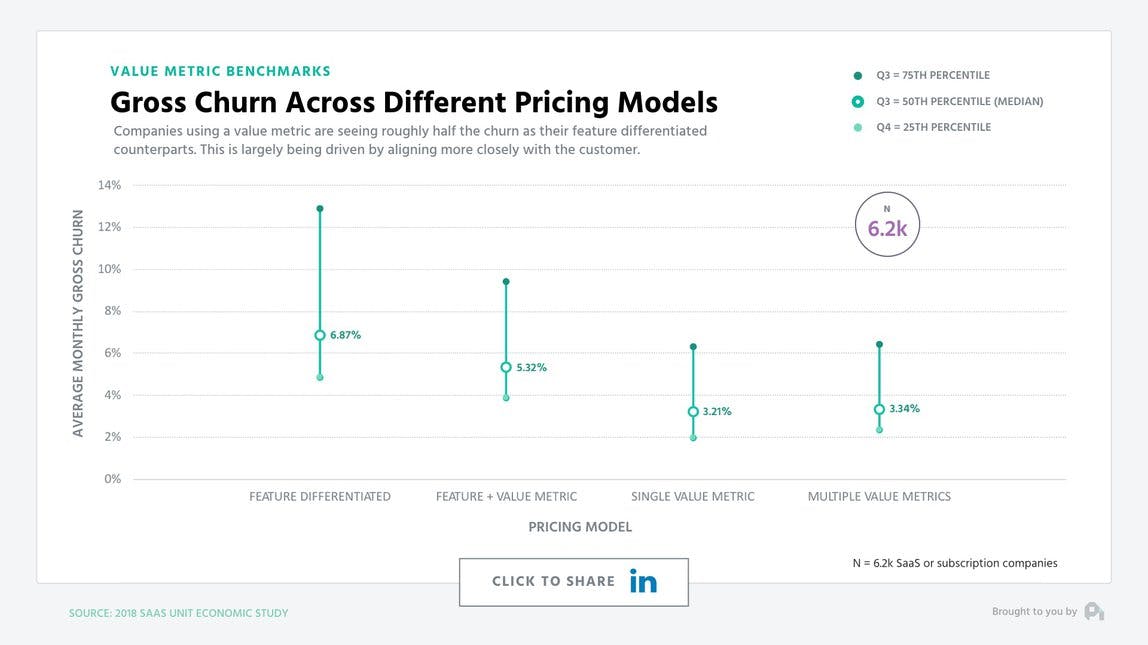
Value-based pricing can help lower your churn rate.
Retaining customers for the long-term also means matching your pricing to your customers’ willingness to pay. If you’re charging more than customers are willing to pay—or if customers’ willingness to pay changes over time and you don't update your pricing strategy to match—your churn rate will continue going up.
#8: Your customers’ credit cards have expired
Credit card payment failures might sound like small potatoes compared to other causes of churn like poor onboarding or buggy products—but delinquent churn is often one of the biggest buckets of SaaS churn. Delinquent churn includes everything from expired credit cards, payment processor problems, and false fraud detection.
Combating active churn means fighting on multiple fronts—but with delinquencies, you only have one single battle. Yet, most companies don't put the same amount of effort into delinquent churn, and they miss the chance to massively reduce their churn rate.
Fix: Use an automated dunning solution
Luckily, delinquent churn is easily preventable by simply contacting your customers. It’s something most of your competitors are scared to do—they worry that by contacting customers, those customers will reconsider their payment and choose not to renew. But, as long as you've got a great product, customers will be eager to update.
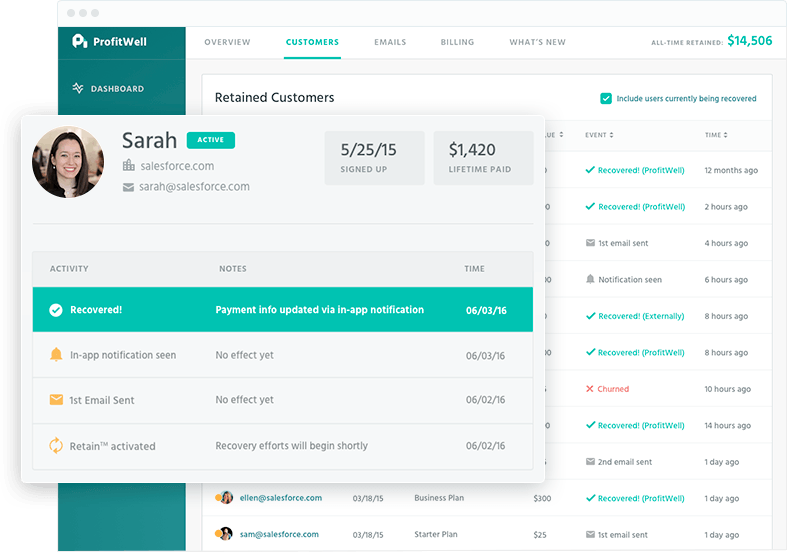
ProfitWell Retain can help you combat delinquent churn automatically.
You can either target customers with dunning messages where they already are—in your product—or send a sequence of emails to remind customers to update their payment information. Automated revenue recovery solutions like Paddle Retain take care of the heavy lifting for you, making it easy to crush delinquent churn and recover lost revenue.
Crush your customer churn
Understanding the reasons behind customer churn—and crushing your churn rate—isn't complicated, but it can be hard. It all boils down to making a concerted effort to understand your customers and their needs, get them involved with your product, and keep them happy enough to stick around.
The rewards, though, are worth the effort—more revenue, loyal customers, and a more sustainable SaaS business.
So don’t be like Icarus. Understand why customers churn, and do something about it before it’s too late. Churn is just too important to ignore.



